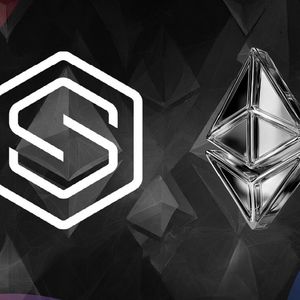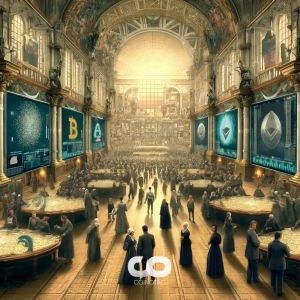Nvidia AI: Revolutionizing Robotics with Breakthrough Cosmos World Models
5 min read
BitcoinWorld Nvidia AI: Revolutionizing Robotics with Breakthrough Cosmos World Models In a landscape increasingly defined by technological convergence, where innovations in artificial intelligence often pave the way for breakthroughs across various sectors, Nvidia has once again captured the spotlight. The semiconductor giant, renowned for powering the digital revolution, has unveiled a suite of transformative Nvidia AI models and infrastructure aimed squarely at the future of robotics and physical AI. For those tracking the pulse of cutting-edge tech, these developments aren’t just about faster machines; they represent a fundamental shift in how AI interacts with the real world, potentially impacting everything from automated industries to even the foundational infrastructure that could one day support decentralized networks. Unveiling the Power of Cosmos World Models At the recent SIGGRAPH conference, Nvidia pulled back the curtain on its latest arsenal of Cosmos world models , designed to push the boundaries of embodied intelligence. Central to this unveiling is Cosmos Reason, a groundbreaking 7-billion-parameter vision language model. This model is not just about understanding; it’s about ‘reasoning.’ Equipped with advanced memory and a deep understanding of physics, Cosmos Reason empowers robots and AI agents to strategize and plan their next actions in complex physical environments. Imagine a robot in a factory, not just following commands, but anticipating issues and devising optimal solutions on the fly. Nvidia highlights its utility for critical applications such as data curation, sophisticated robot planning, and advanced video analytics, fundamentally changing how machines perceive and interact with their surroundings. Complementing Cosmos Reason, Nvidia also introduced Cosmos Transfer-2. This model is engineered to significantly accelerate the generation of synthetic data, drawing from 3D simulation scenes or spatial control inputs. The ability to rapidly create high-quality synthetic datasets is a game-changer for AI training, reducing reliance on often costly and time-consuming real-world data collection. Furthermore, a distilled version of Cosmos Transfer has been optimized for sheer speed, ensuring that developers can iterate and deploy faster than ever before. These models collectively form a robust framework for building more intelligent and adaptable AI systems. Bolstering Robotics AI with Enhanced Infrastructure Beyond the sophisticated Robotics AI models, Nvidia is also reinforcing the foundational infrastructure necessary for these advanced systems to thrive. A significant announcement includes new neural reconstruction libraries. One such library introduces a powerful rendering technique that allows developers to simulate the real world in immersive 3D, leveraging real-time sensor data. This capability is pivotal for creating highly accurate digital twins and virtual testbeds, where AI agents can learn and refine their skills in a safe, controlled environment before deployment. In a move to democratize access to these cutting-edge tools, this rendering capability is being integrated into CARLA, a widely popular open-source simulator for autonomous driving research. This integration will enable a broader community of developers to experiment with and build upon Nvidia’s advanced simulation technologies. Furthermore, the Omniverse software development kit (SDK) has received a substantial update, offering enhanced tools and workflows for collaborative 3D design and simulation, cementing its role as a central hub for creating complex digital worlds. To power these demanding robotics workflows, Nvidia has also rolled out new server solutions. The Nvidia RTX Pro Blackwell Servers stand out, offering a unified architecture specifically designed to handle diverse robotic development tasks, from simulation to AI training and inference. For cloud-based development, Nvidia DGX Cloud emerges as a robust management platform, providing scalable compute resources and streamlined workflows for teams developing next-generation AI and robotics applications. These infrastructure advancements underscore Nvidia’s commitment to providing a complete ecosystem for AI innovation. The Future of Physical AI: A New Frontier Nvidia’s strategic move into physical AI signifies a pivotal shift for the company, extending its influence beyond the traditional AI data center market. The goal is clear: to identify and cultivate the next major application for its powerful AI GPUs. This expansion into physical AI applications, where AI systems directly interact with and manipulate the real world, opens up vast new markets and possibilities. From advanced manufacturing and logistics to healthcare and smart cities, the implications are profound. The ability of AI to ‘reason’ and ‘plan’ in physical spaces, as enabled by Cosmos Reason, promises to unlock unprecedented levels of automation and efficiency. This isn’t just about automating repetitive tasks; it’s about empowering machines to adapt, learn, and make intelligent decisions in dynamic, unpredictable environments. The integration of advanced simulation, robust infrastructure, and sophisticated AI models creates a powerful synergy that will accelerate the development and deployment of truly intelligent robots, setting the stage for a new era of human-machine collaboration. Why AI Infrastructure Matters for the Digital Economy The continuous evolution of AI infrastructure is not merely an engineering feat; it’s a foundational pillar for the burgeoning digital economy. Just as robust internet infrastructure enabled the rise of e-commerce and social media, advanced AI infrastructure is crucial for the next wave of innovation, including decentralized technologies and Web3 applications. The ability to process vast amounts of data, train complex models efficiently, and deploy AI at the edge is becoming increasingly vital. Nvidia’s investments in this area ensure that developers have the tools they need to build the intelligent systems that will power future industries. For those observing the intersection of AI and blockchain, the implications are subtle but significant. As AI models become more sophisticated and require more decentralized data sources or verification mechanisms, robust and scalable AI infrastructure becomes paramount. While not directly a crypto announcement, Nvidia’s relentless pursuit of advanced AI capabilities lays the groundwork for a future where AI and decentralized systems might intertwine more closely, fostering new paradigms of trust, efficiency, and automation. Conclusion: Shaping the Future of Intelligent Machines Nvidia’s latest announcements at SIGGRAPH mark a significant leap forward in the realm of AI and robotics. By introducing powerful world models like Cosmos Reason and Cosmos Transfer-2, alongside enhanced infrastructure such as the RTX Pro Blackwell Servers and updated Omniverse SDK, the company is not just selling GPUs; it’s building the complete ecosystem for the next generation of intelligent machines. This strategic pivot towards physical AI underscores Nvidia’s vision for a future where AI agents can reason, learn, and operate autonomously in the real world, opening up transformative possibilities across countless industries. As AI continues its relentless march, these foundational developments from Nvidia will undoubtedly play a crucial role in shaping the intelligent systems of tomorrow. To learn more about the latest AI market trends, explore our article on key developments shaping AI Models features. This post Nvidia AI: Revolutionizing Robotics with Breakthrough Cosmos World Models first appeared on BitcoinWorld and is written by Editorial Team

Source: Bitcoin World



